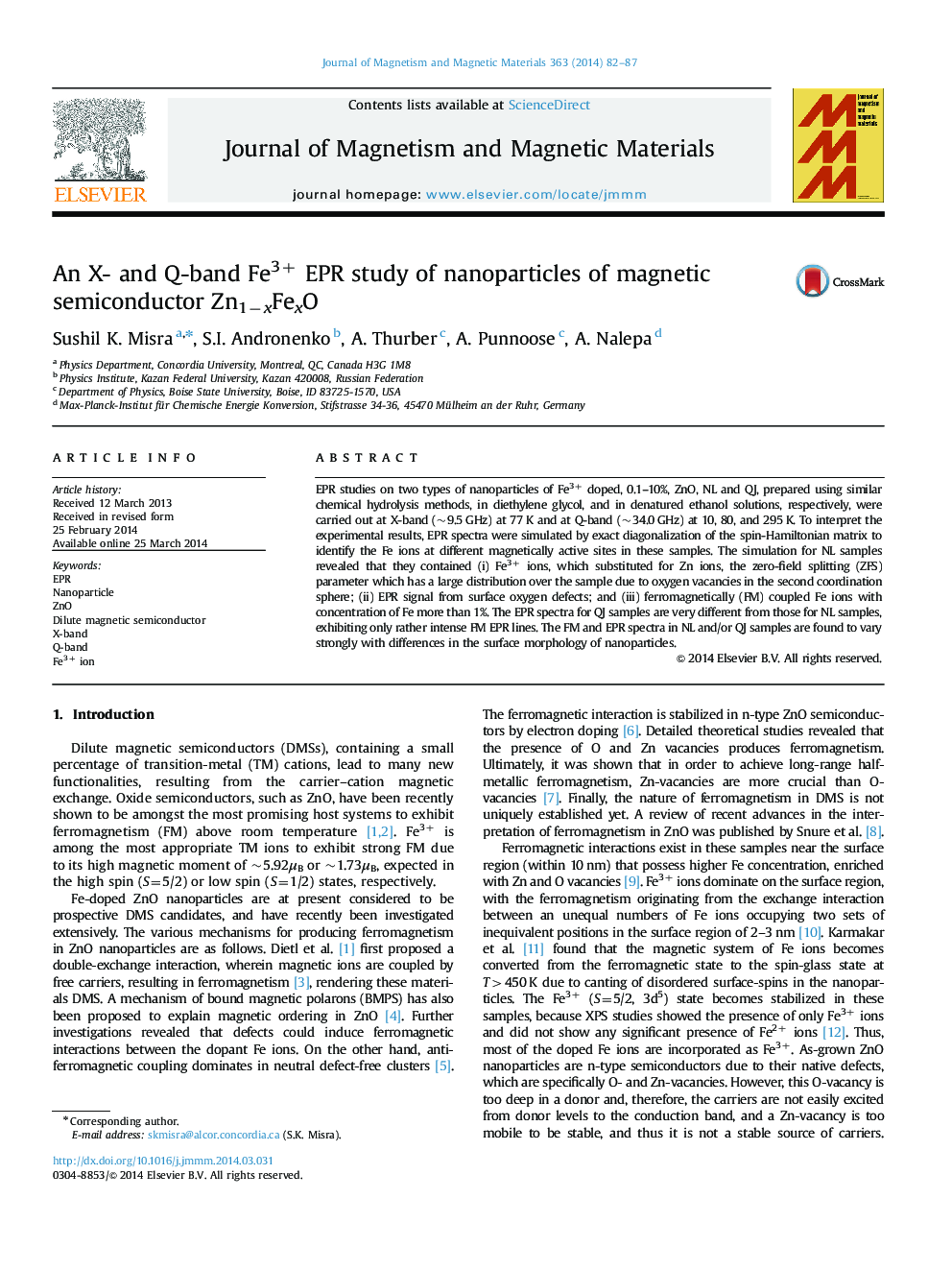| کد مقاله | کد نشریه | سال انتشار | مقاله انگلیسی | نسخه تمام متن |
|---|---|---|---|---|
| 1799642 | 1524858 | 2014 | 6 صفحه PDF | دانلود رایگان |

• X and Q band EPR studies on NL and QJ nanoparticles of Fe3+ doped ZnO at 10, 80, and 295 K.
• Fe ions are present at different magnetically active sites in these samples.
• NL samples consist of paramagnetic Fe3+ ions, and ferromagnetically coupled Fe ions.
• QJ samples exhibit only intense ferromagnetic lines, different from QJ.
• Spectra vary strongly with the surface morphology of nanoparticles.
EPR studies on two types of nanoparticles of Fe3+ doped, 0.1–10%, ZnO, NL and QJ, prepared using similar chemical hydrolysis methods, in diethylene glycol, and in denatured ethanol solutions, respectively, were carried out at X-band (~9.5 GHz) at 77 K and at Q-band (~34.0 GHz) at 10, 80, and 295 K. To interpret the experimental results, EPR spectra were simulated by exact diagonalization of the spin-Hamiltonian matrix to identify the Fe ions at different magnetically active sites in these samples. The simulation for NL samples revealed that they contained (i) Fe3+ ions, which substituted for Zn ions, the zero-field splitting (ZFS) parameter which has a large distribution over the sample due to oxygen vacancies in the second coordination sphere; (ii) EPR signal from surface oxygen defects; and (iii) ferromagnetically (FM) coupled Fe ions with concentration of Fe more than 1%. The EPR spectra for QJ samples are very different from those for NL samples, exhibiting only rather intense FM EPR lines. The FM and EPR spectra in NL and/or QJ samples are found to vary strongly with differences in the surface morphology of nanoparticles.
Journal: Journal of Magnetism and Magnetic Materials - Volume 363, August 2014, Pages 82–87